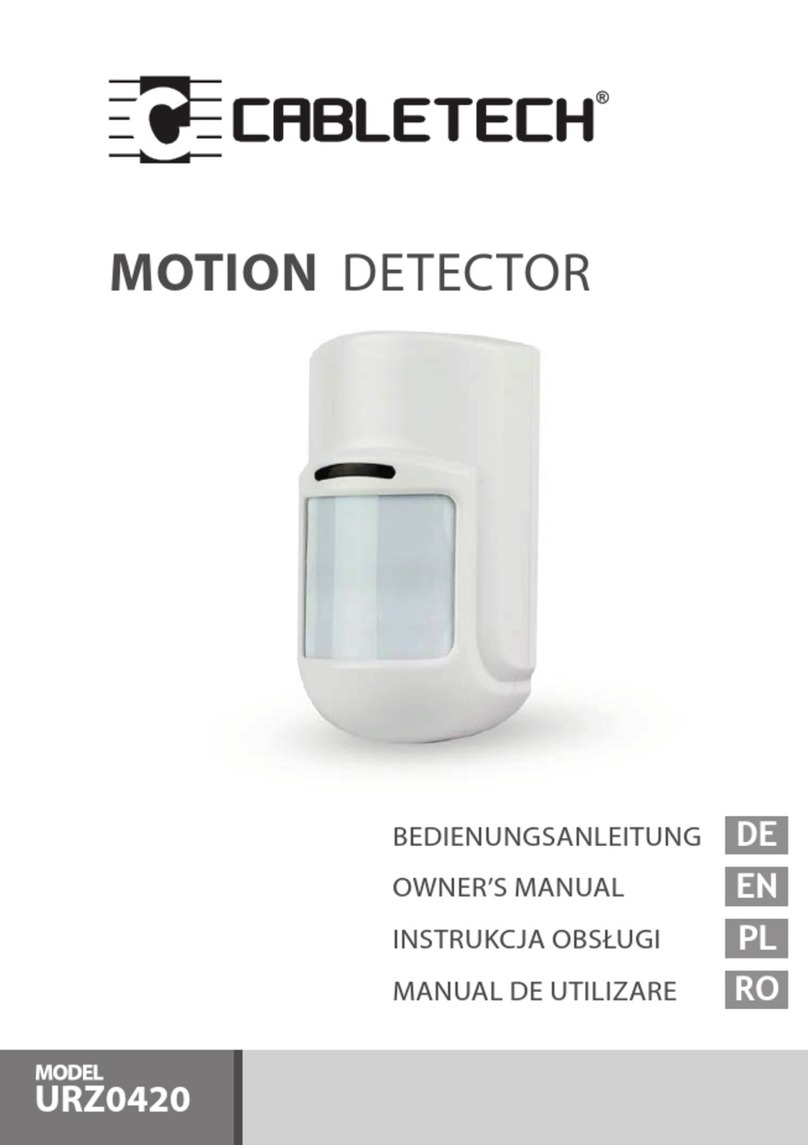
5
Bedienungsanleitung
DE
BEI DER AUSWAHL IHRES AUFSTELLUNGS-ORTES, STELLEN SIE
SICHER, DASS SIE DEN ALARM VON ALLEN SCHLAFBEREICHEN
HÖREN. WENN SIE SIE NUR EIN KOHLENMONOXYDALARM IN IHREM
HAUSE INSTALLIEREN, SOLLTE DIE INSTALLATION DES ALARM
BEIM SCHLAFZIMMER ERFOLGEN UND NICHT IM KELLER ODER
HEIZRAUM.
Zwei selbstklebende Etiketten werden mit dem CO Alarm mitgeliefert.
Tragen Sie die Telefonnummer Ihres Notrufdienstes auf dem Etikett in den
vorgesehenen Platz. Ein Etikett sollte in der Nähe des Alarms angebracht
werden und eines in der Nähe einer Frischluftquelle, wie Fenster oder Türe.
WICHTIG: Dieses Gerät ist nicht geeignet für die Installation in
gefährlichen Standorten wie vom National Electrical Code deniert
4. STANDORTE UN DEN DER ALARM NICHT ANZUBRINGEN
WICHTIG: ungeeignete Stelle können die empndlichen elektronischen
Komponenten in diesem CO-Alarm beeinussen. Stellen Sie den Alarm
NICHT in folgenden Bereichen auf:
(a) Es wird nicht empfohlen, dass Sie diese CO in Garagen, Küchen
oder Ofenräume installieren. Installation in diesen Bereichen könnten zu
Fehlalarmen führen, kann den Sensor an Stoffen aussetzen, die diesen
beschädigen oder verunreinigen, oder der Alarm wird nicht von Personen
in anderen Bereichen des Hauses gehört werden, vor allem, wenn sie
schlafen.
(b) In der Garage kann Fahrzeugabgas etwas Kohlenmonoxid enthalten.
Diese Werte sind höher, wenn der Motor zum ersten Mal gestartet wird.
Auch Stunden nach Beginn eines Fahrzeug-Starts und entfernen aus der
Garage, kann das gegenwärtige Niveau den Alarm aktivieren und zu einem
Ärgernis werden.
(c) In der Küche und Ofenraum, einige Gasgeräte können einen kurzen
Ausbruch von Kohlenmonoxid beim Einschalten emittieren das ist normal.
Wenn Ihr CO-Alarm zu nahe an diesen Geräten eingebaut ist, kann es oft
Alarm auslösen und zu einem Ärgernis werden.
(d) Wenn Sie einen CO-Alarm in der Nähe von Koch- oder Heizgeräten
installieren, in einem Abstand von wenigstens 5 Fuß (1,5 Meter) vom Gerät
installieren.
(e) Nicht installieren in Bereichen in denen die Temperaturen unter 40°F
(4,4°C) fallen oder 100°F (37,8°C) überschreiten.
(f) Nicht in übermäßig staubigen, schmutzigen oder fettigen Bereichen
installieren wie Küchen, Garagen und Ofenräume. Staub, Fett oder
Haushaltschemikalien können den Sensor des Alarms verunreinigen oder
überziehen, wodurch der Alarm nicht richtig funktioniert.
(g) Die Lüftungsschlitze an der Oberseite und der Unterseite des Alarms




























